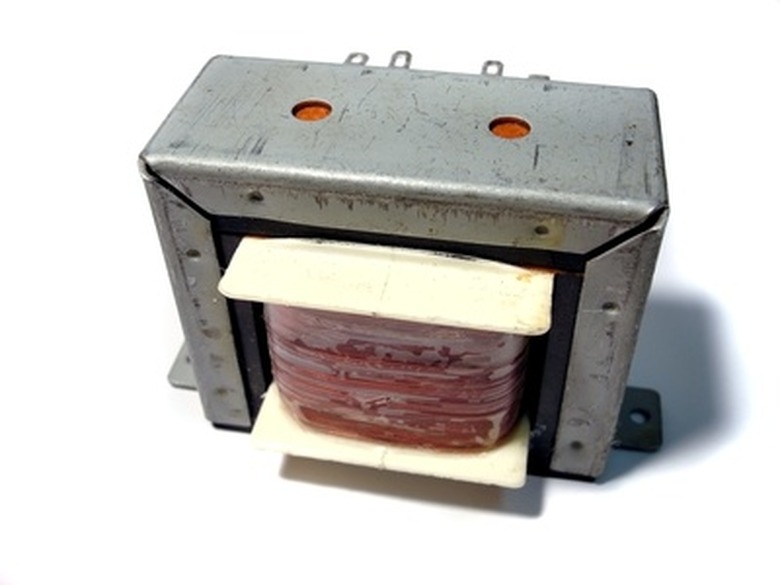How To Troubleshoot A Low-Voltage Transformer
Low-voltage transformers operate many household appliances, from doorbells to air-conditioning systems. A low-voltage transformer taps into a home's high-voltage power supply and produces a safe, low-voltage electrical feed.
Low-voltage transformers do not wear out. A technician should troubleshoot the transformer and find the reason it failed before replacing it. Usually, a transformer fails only after another part in the electrical circuit shorts to ground or draws an unusually high amperage. In these cases, replacing the transformer without first finding and correcting the fault will only cause the transformer to fail again.
Step 1
Identify the transformer's terminals, using its label as a guide. Transformers contain input, known as the "primary," and output, known as the "secondary," terminals. The transformer's label identifies the input (high voltage) and the output (low voltage) sides, along with the input and output voltages — measured as voltage-alternating-current (VAC) — and their corresponding terminals.
Step 2
Turn a multimeter to its VAC function. A multimeter has several settings, including a VAC function and a resistance function. Each setting measures a particular electrical function.
Step 3
Test the transformer's input voltage with the multimeter, using the transformer's label as a terminal guide. Place one of the multimeter leads on each input-voltage terminal and record the voltage.
Check this reading with the transformer's stated input voltage. If the voltage reading does not match the stated input voltage, troubleshoot the voltage source before continuing with the transformer.
Step 4
Test the transformer's output voltage with the multimeter. Compare the reading to the stated output voltage. If the output voltage has a correct reading, the transformer works properly.
If the input voltage has a correct reading, but the output voltage has a high or low reading, the secondary windings have a fault. The transformer must be replaced.
If the input voltage has a correct reading, but the transformer does not produce any output voltage, check the transformer's secondary windings for continuity. In addition, check the secondary circuit for a short.
Step 5
Disconnect the electricity to the transformer. Test the voltage at the input terminals. The multimeter should read "zero."
Step 6
Turn the multimeter to the "resistance, ohms," function. Touch the multimeter's leads together. The multimeter should beep, indicating continuity.
Step 7
Disconnect the wires that go to the input side of the transformer. Place a lead on each input terminal. The multimeter should read "continuity." If the multimeter does not read continuity, the input windings have a short. Replace the transformer.
If the multimeter does read continuity, re-connect the input wires.
Step 8
Disconnect the output wires from the transformer. Check the secondary windings for continuity with the multimeter. If the multimeter shows continuity across the secondary windings, troubleshoot the secondary circuit.
If the multimeter does not show continuity across the secondary windings, inspect the secondary circuit for a short to ground — often a bare wire. You will have to replace the transformer.
